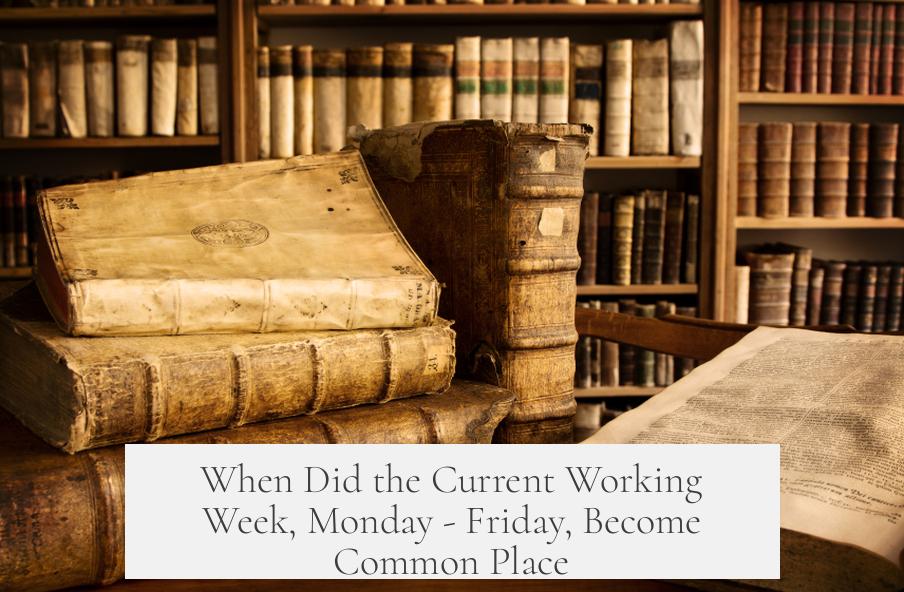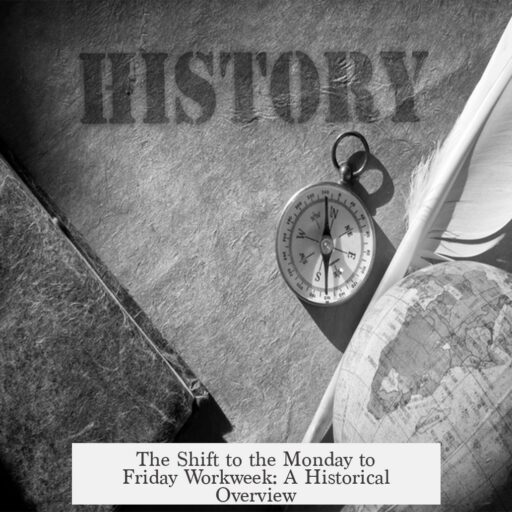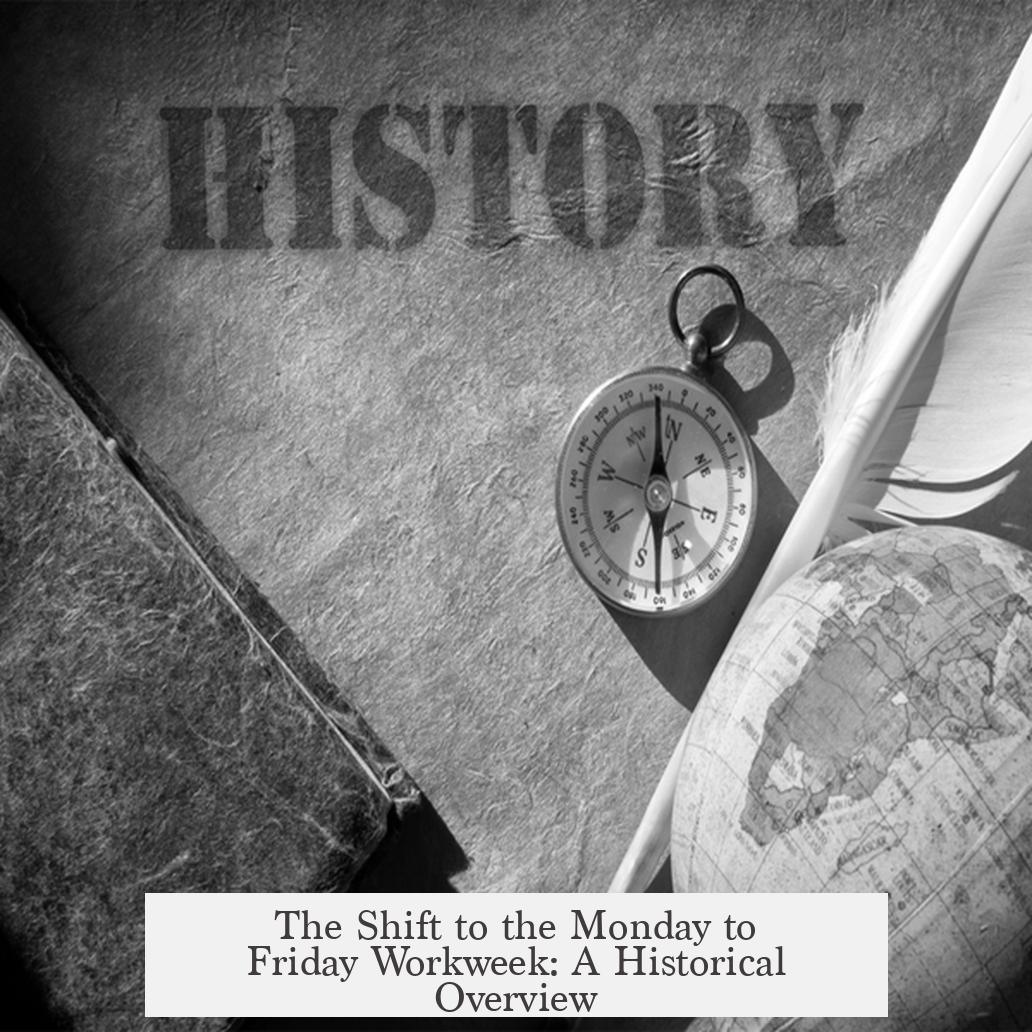The current Monday through Friday working week became commonplace largely due to changes beginning in the early 20th century, with Henry Ford playing a pivotal role by shutting his factories on Saturdays and Sundays in 1926. This helped establish the modern five-day workweek that balances work and leisure over two weekend days.
Work schedules have evolved significantly over the past two centuries, shaped by technological, social, and legislative forces. In the 1840s, typical workdays in textile mills lasted around 12 hours, from sunrise to sunset. The absence of safe electric lighting limited work to daylight hours. However, as lighting technologies improved, working hours extended, provoking labor protests and early investigations into workplace conditions. By 1845, these pressures helped instigate the push for a ten-hour workday.
During the 1860s, the movement for shorter working hours gained momentum and ethical urgency. Labor groups like the National Labor Union argued that reducing work hours would free time for leisure, improving quality of life and stimulating consumer spending. These ideas contrasted harsh working conditions with the notion of humane labor standards.
Late 19th century saw further reductions. Court rulings highlighted the dangers of prolonged exhaustion on workers’ health and safety. The average workweek shrank from around 60 hours toward 50 hours. Studies showed that long hours diminished efficiency and product quality, adding economic rationale to ergonomic and welfare concerns.
World War I created labor shortages that empowered workers to demand shorter days. Strong worker leverage helped move eight-hour days into industry norms. Immigrant labor restrictions in the 1920s further pushed employers to adopt these limits to maintain operations without qualified replacements. Steel and other heavy industries played a key role in these shifts.
During the Great Depression, legislation and economic conditions encouraged employers to reduce hours rather than lay off workers. Some workplaces tested six-hour days to retain employment and consumer spending, helping stabilize the economy during record unemployment peaks around 25%. This era demonstrated the economic and social benefits of shorter work periods.
Post-Depression and World War II periods reversed that trend somewhat. The Works Progress Administration funneled workers back into employment, helping employers resist permanent cuts to hours. Wartime demand for labor and production increased work hours to typically eight per day, securing this length as a standard across sectors.
The transition from a six-day to a five-day working week involved cultural and religious practices. Traditionally, Sunday was a mandated day of rest in Western societies due to Sabbath observance and associated “Blue Laws” prohibiting work on Sundays. In earlier eras with longer workweeks, workers typically worked Monday through Saturday.
As total weekly hours declined and leisure time grew more valued, the division of work hours allowed employers like Ford to eliminate Saturday as a workday altogether. Ford’s 1926 decision to close factories on Saturdays and Sundays institutionalized the two-day weekend. It reflected his belief in leisure improving worker productivity and overall well-being. This move influenced many industries to adopt the modern Monday-to-Friday workweek.
| Period | Work Hours & Week Structure | Key Developments |
|---|---|---|
| 1840s | Up to 12 hrs/day, 6 days/week | Labor protests; 10-hour day pushed |
| 1860s | ~60 hrs/week | Labor unions demand shorter hours |
| Late 19th Century | 50-60 hrs/week | Court rulings improve conditions |
| WWI Era | Often 8 hrs/day | Labor shortages enforce shorter days |
| Great Depression | Reduced hours, some 6 hrs/day | Legislation promotes hour cuts |
| 1926 | 5-day week (Mon-Fri) | Ford ends Saturday shifts |
- Industrial and labor reforms drove work hours from 60+ to 40 hours weekly.
- Religious traditions preserved Sunday as a day off, initially resulting in six-day workweeks.
- Henry Ford’s 1926 factory closures on weekends popularized the modern two-day weekend.
- Economic and social factors during the Great Depression further validated reduced hours.
- The five-day, Monday to Friday, workweek balances efficiency, labor rights, and leisure.
When Did the Current Working Week, Monday – Friday, Become Common Place?

The modern Monday-through-Friday workweek becomes common place largely due to Henry Ford’s bold move in 1926. Before Ford, the concept of a two-day weekend was rare and the working week often spanned six days or more. But this transformation actually roots itself deep in a long, winding history of labor struggles, economic shifts, and changing social attitudes.
Let’s unpack how and when the five-day workweek came to be, why it matters, and what lessons we can still draw from this evolution.
Early Days: Ten to Twelve Hours of Grueling Work
Picture the 1840s in a textile mill. Factory workers toiled from sunup to sundown — sometimes 12 hours a day. Why? No electric lights yet, so working after dark with flammable fabrics was a fire hazard waiting to happen.
Once electric lighting entered the scene, factory owners extended hours even further. This sparked protests and investigations into brutal working conditions, leading eventually to the development of the ten-hour workday. Even then, breaks and lunches were often scarce.
Why Did People Push for Shorter Hours?
The 1860s brought a shift in mindset. Workers and unions began equating long, exhausting labor with a form of modern-day slavery. Groups like The National Labor Union championed shorter hours, not only for health but to allow time for leisure and consumption — an early nod to work-life balance.
By the late 19th century, weekly hours dropped gradually from 60 to about 50 hours. Courts recognized how exhaustion endangered workers and reduced efficiency, giving legal weight to the push for better working hours.
The Impact of Global Events and Labor Shortages
World War I shakes things up by creating labor shortages. Workers now have leverage. They demand and receive about an eight-hour day. Steelworkers, notorious for 12-hour shifts, also saw their hours reduced.
The 1920s anti-immigrant policies further tightened labor pools. Employers couldn’t just replace unhappy workers easily. This forced firms to improve conditions or lose reliable help. This backdrop sets the stage for one revolutionary workplace change.
Henry Ford’s Game-Changer: The Two-Day Weekend

In 1926, Henry Ford makes a bold decision: He shuts down his factories on Saturdays and Sundays. He pioneers the five-day workweek from Monday to Friday. Why? Ford saw the benefits of giving his workers rest and leisure time, believing happier workers would be more productive.
This move rewrites the work-life script in the United States. Ford’s influence spreads quickly, making the Saturday-Sunday weekend a norm in many industries. It’s not just about rest; it’s about creating a consumer culture where people had time and energy to shop on weekends too.
The Historical Importance of the Weekend’s Origin
For centuries, most Western societies observed a day of rest on Sunday due to religious customs. This meant that, historically, the workweek often included Saturday, resulting in a six-day grind.
The introduction of the two-day weekend challenged longstanding traditions. But as working hours shrank and leisure gained importance, the extra day off became more than a religious observance — it evolved into a social and economic necessity.
The Great Depression and World War II: Economic Pressures Shape Hours
During the Great Depression, cutting working hours became a strategy to share scarce jobs among more people instead of mass layoffs. Some places experimented with six-hour workdays! This helped keep money flowing as workers had income to buy goods, aiding economic survival (remember, unemployment hit 25%).
Post-Depression, Roosevelt’s Works Progress Administration helped pull people out of unemployment, but employers resisted permanent short hours.
Then WWII demands boosted labor needs again. Work hours rose back to roughly eight hours per day, but the five-day workweek had taken firm root.
Fast Forward: Why Does This Matter Today?
The journey from harsh, six-day workweeks to the Monday-Friday norm teaches us a lot:
- Workers’ rights evolved slowly but surely. Labor movements pushed through decades of resistance to gain reasonable hours.
- Efficiency and worker welfare aren’t enemies. Fatigue diminished productivity; rest improved quality and safety.
- Leisure time fuels the economy. Ford understood early on, the weekend made consumers, not just workers.
Today, debates swirl around reducing workweeks even further or increasing flexibility. Knowing this history reminds us how work patterns are shaped by economic, social, and technological forces—and that changes often start with daring ideas.
What Can You Take Away?
If you ever groan on a Monday morning, remember the push and sacrifice it took to win the weekend. It wasn’t always normal to have Saturdays and Sundays off.
Also, think about how your own work-life balance may evolve. Just as Henry Ford revolutionized factory schedules nearly a century ago, we may be on the cusp of yet another shift. Why settle for “normal” when “better” might be just an idea away?
“The future of work isn’t just about hours, but how those hours empower us.”
So next time you kick back on a Friday evening, appreciate the long history that shaped your weekend. It’s more than rest—it’s a cultural milestone, a triumph over exploitation, and a smart economic choice all rolled into one.



